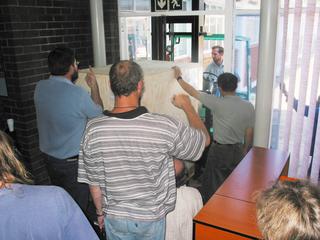
Left click on image for large version

HartRAO Home > news > Hydrogen Maser arrives 2003/11/09
The maser provides standard outputs of 5 MHz, 10 MHz and 1 PPS. These are phase-locked to the microwave emission frequency of the hydrogen gas in the maser cavity of 1420 405 751.689 Hz. The frequency stability is 1 part in 1015 over 1000 seconds, and the frequency drift is less than 1 part in 1014 per day. The stability is about a factor of three better than the older maser.
The maser is essential for the operation of the telescope in the international networks of radio telescopes using the Very Long Baseline Interferometry (VLBI) technique for astronomy and geodesy. The maser provides the clock signal that is recorded with the radio signal from the telescope, and allows the signals from each pair of telescopes in the network to be aligned to obtain interference fringes between the two signals.

Pieter Stronkhorst is seen above in the unenviable job of using the forklift to manoever the R1.5m atomic clock through the door of the observatory.
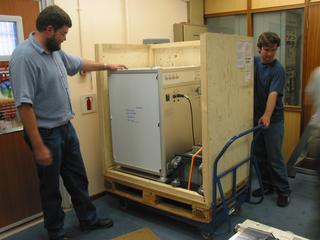
The shipping crate is partly open. Jonathan Quick surveys the maser, while Japie Greef works.
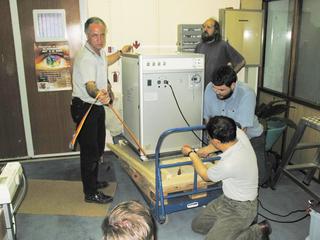
Alain Jornod, on the left, with Keith Jones, Jonathan Quick and Roland Huang move the maser off the base of the crate.
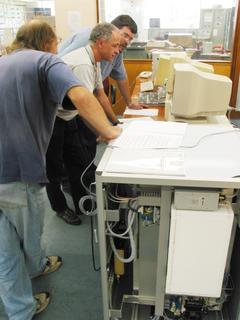
A computer has been connected to the maser, which stands in the foreground with a side panel removed. Alain checks the readings while Keith and Jonathan watch.
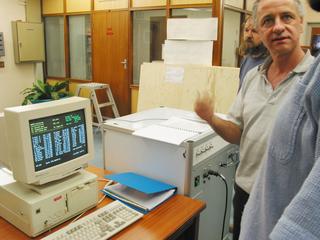
Alain explains the details of the computer readouts.
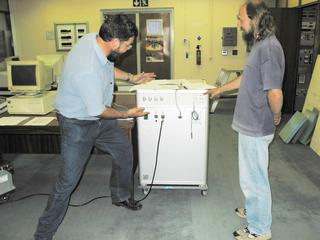
Don't try this at home, it needs a trained professional. Jonathan demonstrates the correct technique for turning on the maser. Keith notes that the green LEDs have come on, indicating that all is well.